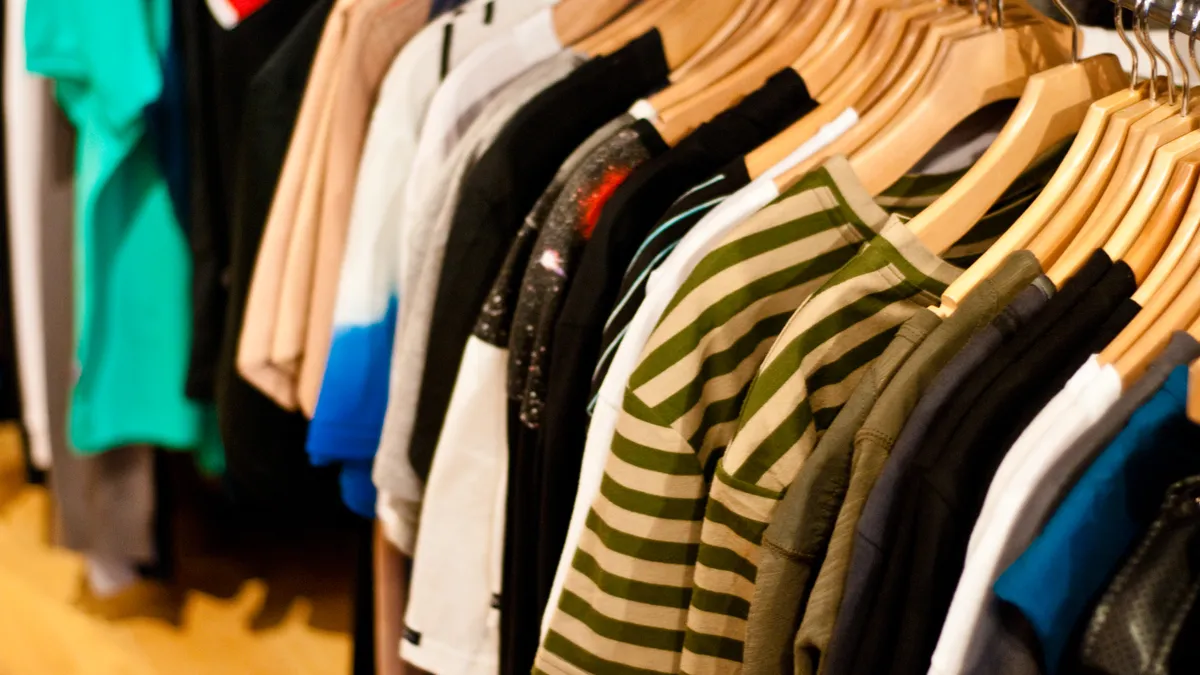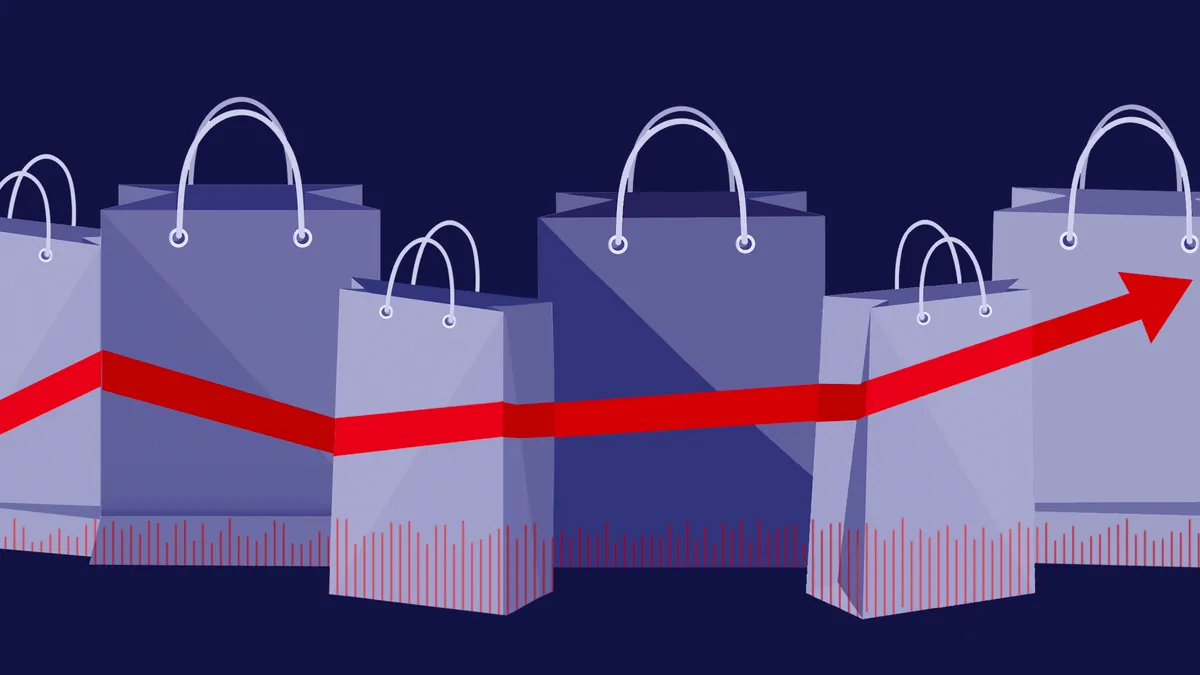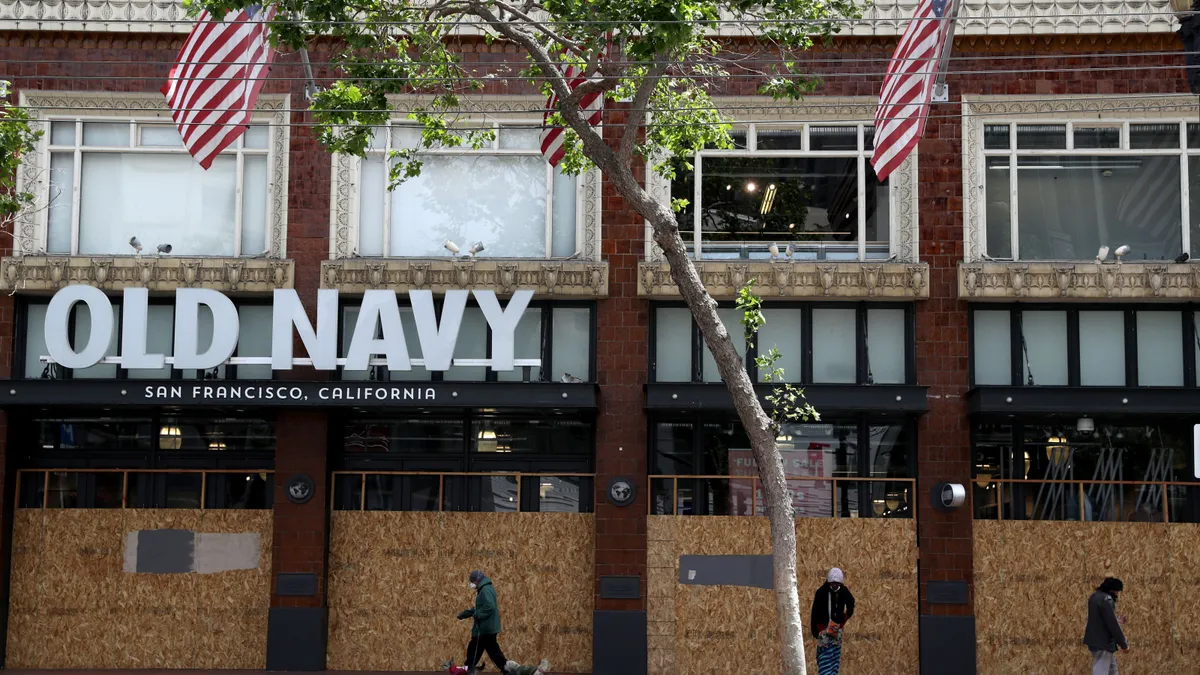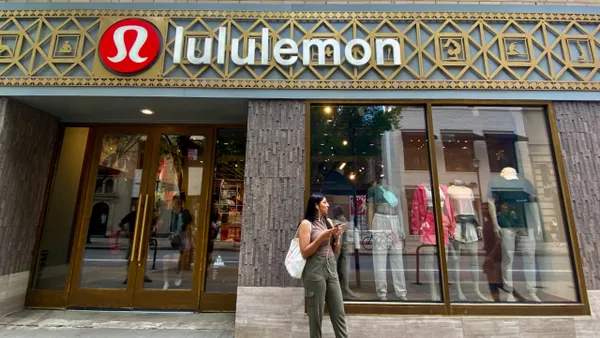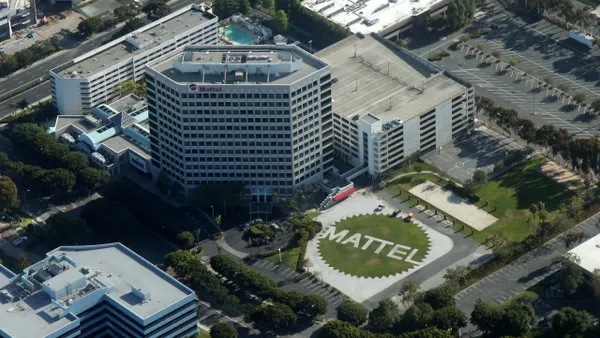Dive Brief:
- Tariffs and trade policy leading to increased sourcing costs are top of mind for the apparel industry, findings from the U.S. Fashion Industry Association's (USFIA) 2018 Fashion Industry Benchmarking Study indicate.
- For the second year in a row, apparel bands and retailers listed "protectionist trade policy agenda" in the U.S. as their top business challenge. Before 2017, the issue ranked no higher than number 10.
- While China continues to be the most frequently used sourcing base, volumes are decreasing. "China now typically accounts for only 11% to 30% of companies' total sourcing value or volume, compared with 30% to 50% in the past," according to the study.
Dive Insight:
What started with a few taxes on solar panels and washing machines has escalated to a trade battle affecting industries well beyond home appliances and energy.
With more tariffs tossed between the U.S. and its trading partners, including an announcement of duties on $200 billion worth of imports from China and the fear of more to come, "U.S. fashion brands and retailers are justifiably concerned," according to the USFIA report.
While tariff implementation didn't begin until this year, the apparel industry was wary of potential changes to come with a new administration at the White House. Obama, who pushed for free trade with several Asian and South American nations under the Trans-Pacific Partnership, stood in stark contrast to Trump, who called TPP a 'potential disaster'.
In USFIA's 2017 benchmarking study, protectionist trade policy ranked as the number one challenge for businesses — a significant jump from it's rank of number 10 in 2016. The concerns over trade policy are leading many companies to shift their supply chains and look for alternative sourcing destinations. "Finding a new sourcing base other than China" was ranked number seven in top business challenges, compared to rank 13 the prior year.
Much of the intention behind Trump's tariffs was to reshore manufacturing and production, bringing jobs and competitive advantage back to the U.S. While apparel brands may be transitioning away from China, they're not necessarily moving their source base to the U.S. Only 46% of respondents sourced goods from the U.S. in 2018, down from 70% in 2017.
Whether that figure will increase in 2019 remains to be seen. Sourcing within the U.S. offers advantages of speed to market and low compliance risk, but production costs are high. Costs are significantly lower in nations such as Vietnam and Bangladesh — both of which are growing as source bases for the fashion industry.
Low cost may end up being the deciding factor for many brands, as increasing production and sourcing costs ranks as a top challenge. "It's clear this cost pressure is directly tied to fears about the impact of tariffs and trade wars," Julia Hughes, president of USFIA, wrote in the study.
Nearly all (90%) of respondents expect their costs to increase this year. More than half (54%) of respondents said high sourcing costs were among their top five business challenges this year, up from about one-third (34%) in 2017.
U.S. apparel imports from China are actually decreasing in cost, however. USFIA said the unit price dropped 1.6% in the first quarter of 2018. On average, costs increased by 1.7% in the rest of the world. "A looming U.S.-China trade war is more likely to be the key driver behind respondents’ eagerness to find China’s alternative than cost considerations," the study said.



